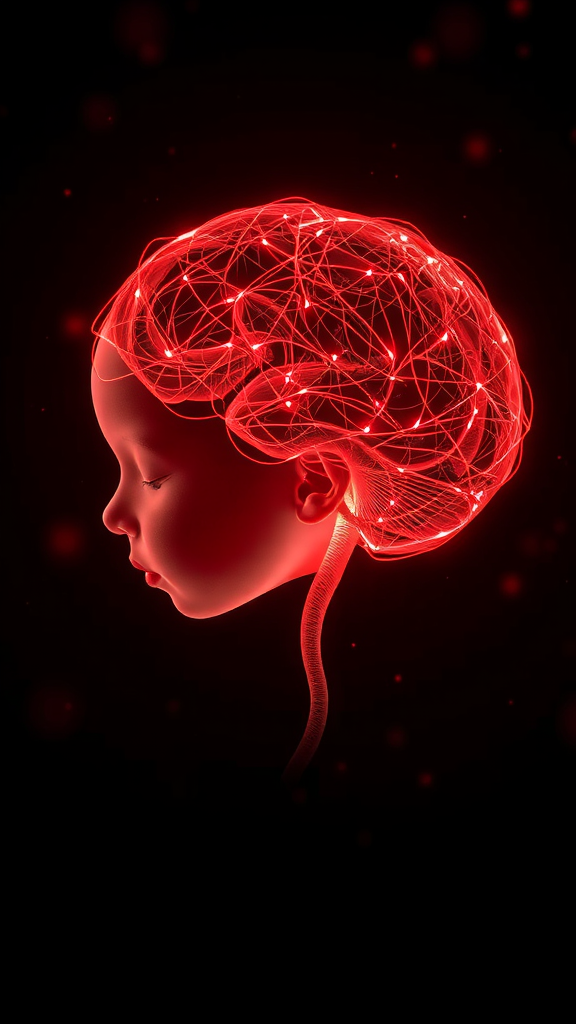When Can Brainwaves Be Detected in a Fetus?
Detecting Fetal Brainwave Activity
The development of a fetus is a fascinating and complex process, with many crucial milestones along the way. One of the most significant markers of fetal growth is the emergence of brain activity, which can be detected through various medical imaging techniques. But when exactly can these brainwaves be observed, and what do they reveal about the developing baby?
The Timeline of Fetal Brainwave Development
Fetal brain activity begins to emerge as early as the 6th week of pregnancy, though the signals are very weak and sporadic at this stage. By week 12, the fetus has developed a more recognizable brain structure, and electroencephalography (EEG) can detect distinct patterns of brain waves. These early brainwaves are associated with the development of the cerebral cortex, the outermost layer of the brain responsible for higher cognitive functions.
As the pregnancy progresses, the fetal brain continues to mature rapidly. By week 20, the brain activity becomes more coordinated, with the emergence of sleep-wake cycles. These cycles are detectable through EEG and can provide insights into the fetus’s neurological development. By the 24th week, brain activity becomes more complex, with distinct patterns associated with different stages of sleep.
The Significance of Fetal Brainwave Detection
The ability to detect and monitor fetal brainwaves has important medical implications. Tracking the emergence and progression of these brain signals can help healthcare providers identify potential neurological issues or developmental delays early on. Additionally, the patterns of brain activity can provide valuable information about the fetus’s overall well-being and response to external stimuli.
For example, research has shown that certain patterns of fetal brainwaves can be linked to the risk of preterm birth or other complications. By closely monitoring these signals, healthcare providers can intervene and take appropriate measures to support the fetus and ensure a healthy pregnancy and delivery.
The Role of Imaging Technology
Advances in medical imaging technology have greatly improved the ability to detect and analyze fetal brainwaves. Techniques such as EEG, magnetoencephalography (MEG), and functional magnetic resonance imaging (fMRI) allow healthcare providers to non-invasively monitor the developing brain and gain insights into its function.
EEG, in particular, has become a widely used tool for fetal brain assessment. By placing electrodes on the mother’s abdomen, healthcare providers can record the electrical activity generated by the fetal brain and track its development over time. This information can be invaluable in identifying any abnormalities or potential issues that may require further evaluation or intervention.
Ethical Considerations
The ability to detect and monitor fetal brainwaves raises important ethical considerations. While the information gathered can be invaluable for healthcare providers, it also has the potential to be used in ways that could impact the autonomy and rights of the pregnant individual. Concerns about privacy, informed consent, and the potential for discrimination or stigmatization based on fetal brain data must be carefully addressed.
Healthcare providers and policymakers must work to ensure that the use of fetal brainwave detection technology is guided by ethical principles and that the rights and well-being of the pregnant individual and the developing fetus are always prioritized.
The detection of fetal brainwaves is a remarkable scientific achievement that provides valuable insights into the development of the human brain. As technology continues to advance, the ability to monitor and analyze these signals will undoubtedly become an increasingly important tool in prenatal care. However, it is crucial that the use of this technology is guided by ethical considerations and a deep respect for the complex and sensitive nature of pregnancy and fetal development.
Key Milestones in Fetal Brain Development
The Fascinating Journey of Fetal Brain Development
The human brain is a marvel of nature, and its development begins long before birth. From the earliest stages of pregnancy, the fetal brain undergoes a remarkable transformation, laying the foundation for a lifetime of cognitive abilities, emotional intelligence, and sensory perception. Understanding the key milestones in this intricate process can provide valuable insights into the remarkable journey of fetal brain development.
Conception and the Embryonic Stage
The journey of fetal brain development begins at the moment of conception, when the fertilized egg begins to divide and grow. During the embryonic stage, which lasts from conception to about 8 weeks of pregnancy, the neural tube forms, which will eventually develop into the brain and spinal cord. This crucial structure serves as the foundation for the central nervous system, setting the stage for the incredible complexity that will unfold in the weeks and months to come.
The Fetal Stage: Rapid Growth and Specialization
As the pregnancy progresses, the fetal stage, which lasts from 9 weeks to birth, is marked by rapid growth and specialization within the developing brain. Around 20 weeks, the first brain waves can be detected, indicating the beginnings of electrical activity and the emergence of neural communication. This is a significant milestone, as it signals the brain’s increasing ability to process information and respond to external stimuli.
Neuronal Migration and Synapse Formation
In the ensuing weeks, the fetal brain undergoes a remarkable process of neuronal migration, wherein neurons (nerve cells) move to their designated locations within the brain. This intricate dance of cell movement lays the foundation for the brain’s specialized regions, each responsible for particular functions, such as language, problem-solving, and emotional processing.
As the neurons find their rightful places, they begin to form connections, known as synapses, which allow for the transmission of information between different parts of the brain. This synapse formation is a critical aspect of brain development, as it enables the brain to process information, learn, and adapt to its environment.
Sensory Development and Responsiveness
Around 24 weeks, the fetal brain begins to demonstrate responsiveness to external stimuli, such as sound and touch. The development of the auditory and tactile systems allows the fetus to experience and respond to the world around them, laying the groundwork for early learning and sensory integration.
Rapid Growth and Maturation
In the final months of pregnancy, the fetal brain undergoes a remarkable period of rapid growth and maturation. The number of neurons and synapses continues to increase, and the brain’s various regions become increasingly specialized and interconnected. This period is crucial for the development of higher-order cognitive functions, emotional regulation, and the establishment of sleep-wake cycles.
The Remarkable Journey Continues
The journey of fetal brain development is a testament to the incredible complexity and adaptability of the human body. From the earliest stages of conception to the final weeks before birth, the fetal brain undergoes a remarkable transformation, laying the foundation for a lifetime of cognitive, emotional, and sensory experiences. By understanding these key milestones, we can better appreciate the incredible feat of human development and the profound impact that the intrauterine environment can have on the shaping of the human brain.
Conclusion
Fetal brain development is a complex and fascinating process that unfolds gradually over the course of pregnancy. While brainwaves can be detected as early as the sixth week of gestation, these initial neural signals are quite basic and rudimentary. It’s not until around the 29th week that the fetus begins to exhibit more sophisticated brain activity, including the emergence of distinct sleep-wake cycles.
By the 34th week, the fetal brain has developed sufficient complexity to potentially experience sensations and even minimal levels of consciousness. However, the extent to which a pre-term infant can perceive and process external stimuli remains an area of active research and debate. Ultimately, the full scope of fetal brain capabilities remains an intriguing frontier, with new discoveries continually expanding our understanding of this remarkable period of human development.
As expectant parents eagerly await their little one’s arrival, it’s important to remember that the fetal brain is still very much a work in progress. While milestones like brainwave detection and sleep-wake cycles can provide valuable insights, the true depth of fetal consciousness likely remains beyond our current grasp. The journey of fetal brain development is both complex and awe-inspiring, inviting us to approach this topic with a sense of wonder and humility.


